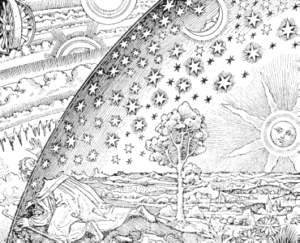Stellar Cartography
 Star Trek may pretend to be about people meeting aliens, but the ultimate challenge is Exploration. And to
explore you need to plan where you are going and know where you are. Enter "Stellar Cartography". In the original
fictional development of Star Trek, Gene Roddenberry used Science Fact as a basis for painting his Universe and used
poetic license to tell his stories. As the series became popular Star Trek fans embraced Star Trek for its pseudo-real
image. While the writers felt their stories should be enough, techie Trekkies wanted an explanation of how the ST Universe
worked. How would FTL work? Where is Vulcan in relation to Earth? How is a Stardate determined? How can you see and
communicate while traveling FTL? To this day the Star Trek writers still don't understand. They still think the story is enough.
They think the Trekkie's afore mentioned questions are petty and unimportant. Well they aren't. The need to have these
questions answered are the same as asking the Mystery writer, "How can the Butler be the murderer when he was killed in
Chapter 2?" Just as Stellar Cartography is far more complicated than terrestrial-based cartography, modern Science Fiction
writing is more complicated than other writing. Consistency is important.
Star Trek may pretend to be about people meeting aliens, but the ultimate challenge is Exploration. And to
explore you need to plan where you are going and know where you are. Enter "Stellar Cartography". In the original
fictional development of Star Trek, Gene Roddenberry used Science Fact as a basis for painting his Universe and used
poetic license to tell his stories. As the series became popular Star Trek fans embraced Star Trek for its pseudo-real
image. While the writers felt their stories should be enough, techie Trekkies wanted an explanation of how the ST Universe
worked. How would FTL work? Where is Vulcan in relation to Earth? How is a Stardate determined? How can you see and
communicate while traveling FTL? To this day the Star Trek writers still don't understand. They still think the story is enough.
They think the Trekkie's afore mentioned questions are petty and unimportant. Well they aren't. The need to have these
questions answered are the same as asking the Mystery writer, "How can the Butler be the murderer when he was killed in
Chapter 2?" Just as Stellar Cartography is far more complicated than terrestrial-based cartography, modern Science Fiction
writing is more complicated than other writing. Consistency is important.
Well the sad truth is, the writers don't care. They write stories by formula. I believe Gene Roddenberry intended his Universe to be designed as closely as possible to the real one. To that end this Stellar Cartography page will have elements of the Star Trek Universe and the real Universe. If you want a map of the stars in the Star Trek Universe, you won't find one. No canon Star Trek maps exist. There are small clips and scenes but they don't show you anything useful. I believe that Gene Roddenberry's intent (as well as that of all Science Fiction in general) is to inspire you to go out and learn the answers yourself. Unfortunately when you lookup the names of the stars referenced in Star Trek you will find flagrant inconsistencies. Planets supposedly close to each other, aren't, and vice versa. And suddenly from your discovery you gain a sudden empty feeling . . . Welcome to your first Snipe Hunt.